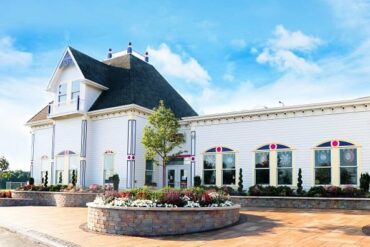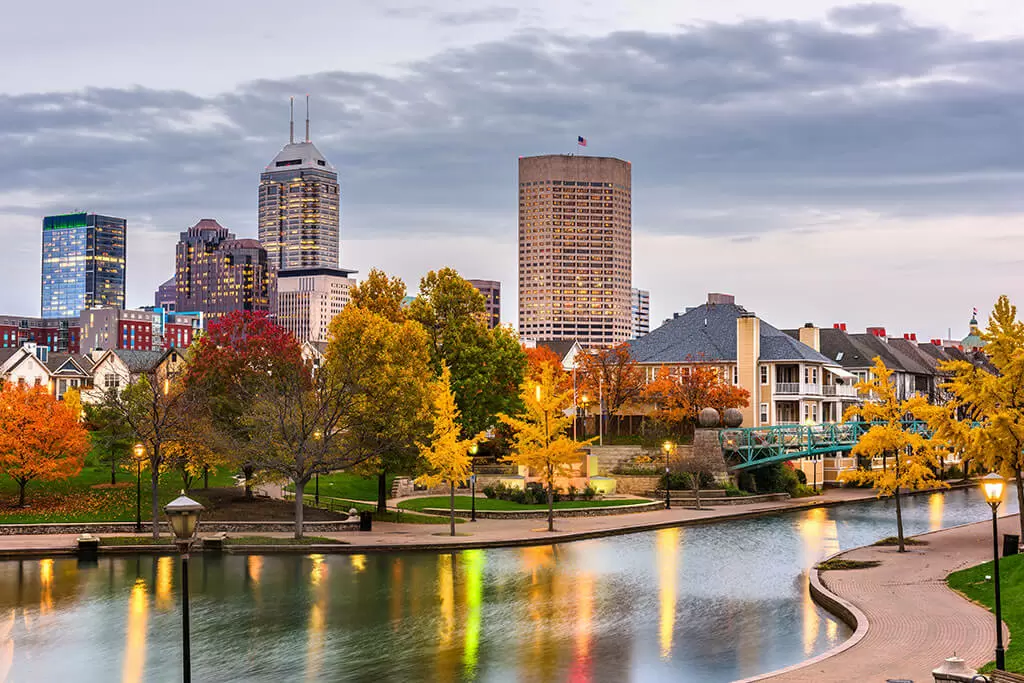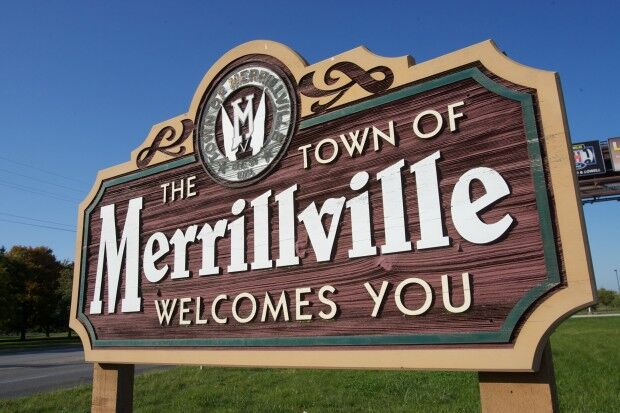Zaharakos Ice Cream Shop and Museum. The Atterbury-Bakalar Air Museum in Columbus, Indiana, is dedicated to the memory of all civilian and military personnel who served during the conflicts and wars between 1942 and 1970 in any capacity, and serves to remember the various events of the Second World War, along with Vietnam, Cuba and The Korean Conflicts, which affected Many lives. The Atterbury-Bakalar Air Museum has no entrance fee and aims to inspire and educate guests through personal stories, photos and history of the men and women who served. The Crump Theater is located less than a block from the Bartholomew County Courthouse, in the historic center of the city, and is one of the city’s sentimental favorites.
The history of theater dates back to the year 1889, when J, S. built an opera house. Crump in the back of an existing building. No expense was spared for domestic theater firms to design the theater’s picturesque backdrops and luxurious interior.
The Crump Theater has hosted a variety of acts and several famous artists over the years, such as John Mellencamp and John Philip Sousa. You are reading 14 Best Things to Do in Columbus, Indiana Back to top. The city of Columbus is located about 40 miles south of Indianapolis and has a worldwide reputation for its mid-century modernist architecture. In the 1950s, industrialist J.
Irwin Miller created a foundation in Columbus to pay the fees of architects who designed new public buildings in the city. In downtown Columbus, these works are mixed with preserved Victorian storefronts and public art works by artists such as Henry Moore and Jean Tinguely. Here, even street furniture for everyday use, such as city bicycle racks, has a certain finesse. The principal patron of modern architecture in Columbus was industrialist and philanthropist J.
Miller established the Cummins Foundation in 1954, which would pay the architect fees for all new public buildings in Columbus. In 1953, he and his wife Xenia Simmons Miller commissioned their friend Eero Saarinen (1910-196) to design their home by the Flatrock River in Columbus. The result is one of the country’s most important mid-century modernist residences, with cutting-edge interior design by Alexander Girard (1907-199) and landscape architecture by Dan Kiley (1912-200). In the center, on the 400th block between Washington and Jackson Streets, is Friendship Way, a landscaped alley enhanced by an untitled neon sculpture by Cork Mareschi.
Extolled by that fascinating architecture and public art, downtown Columbus is an ideal meeting place, filled with restaurants, craft breweries, cafes, boutiques, galleries and stores. A couple of veteran selections include the Columbus Bar, Indiana’s oldest bar and restaurant, dating back to 1939, and Zaharakos, an ice cream shop that has been part of the scene for more than 120 years. Close to the city center, in a bullring on the Flatrock River, Mill Race Park has been recognized by Landscape Management as one of the 100 best parks in the country for its design, accessibility and reputation. All this is a long way from the beginning of the 20th century, when this piece of the floodplain, often underwater, had a health and rodent problem, earning it the nickname “Death Valley”.
One of them is an 84-foot tall observation tower. There are a couple of artificial lakes, a covered bridge, a children’s playground, an interpretive wetland walk and a dirt amphitheater inspired by historic Native American earthworks in the region, and where summer concerts are held. With a hexagonal footprint, the Northern Christian Church has a 192-foot tall central metal spire. At the base of the tower there is an oculus that illuminates the magnificent sanctuary, which has rows of benches centered on the communion table, just below the tower.
Clad with brick and limestone, and with transparent floor-to-ceiling windows in the nave and chancel, the First Christian Church was designed by Eliel Saarinen (1873-1950). Inside, above the choir, you can see the 35 x 11.5 foot tapestry, designed by Eliel and produced by Scandinavian weavers under the direction of his wife, Loja. Based on a design by Argentinian architect César Pelli (1926-201), it is an interior space for events and communities in the city, covered with class. One reason to enter is to see Jean Tinguely’s 30-ton kinetic sculpture, Chaos I (197), in the lobby.
This work is made up of local scrap and is designed to be irregular, sometimes with only a few elements working and other times with a total and noisy flow. A family favorite in the Commons is the whimsical 5,000-square-foot covered playground, which contains the 35-foot tree-shaped “Luckey Climber,” with interconnected platforms, all wrapped in nets. At more than 27 miles and still growing, the People Trail system makes it easy to navigate Columbus on foot or by bike. Take a moment to visit the museum, with rare artifacts, such as an orchestra from the 1870s and the largest collection of pre-20th century marble refreshment fountains on public display.
Nearby, to mark the exact location of the old base, a McDonnell Douglas F-4 Phantom fighter bomber is on display. North of downtown Columbus is the city’s oldest park, which dates back more than a century and is connected to People Trails. The appeal of Donner Park is undeniable in summer thanks to the Aquatic Center, which has an eight-lane, 50-meter pool, a leisure pool with fountains and a play structure, as well as a dive well and a water slide that is 20 feet high and 160 feet long. One of America’s best examples of architecture awaits you in Columbus, where the city center mixes 20th century masterpieces with 19th century structures.
Pei and Eero Saarinen made their mark here, earning Columbus recognition by the American Institute of Architects as the sixth best city in the United States for architectural innovation. The Indiana Philharmonic in Columbus is an award-winning philharmonic orchestra that offers several performances throughout the year for the community of Columbus, Indiana and beyond. . .
Zaharakos Ice Cream Shop and Museum. The Atterbury-Bakalar Air Museum in Columbus, Indiana, is dedicated to the memory of all civilian and military personnel who served during the conflicts and wars between 1942 and 1970 in any capacity, and serves to remember the various events of the Second World War, along with Vietnam, Cuba and The Korean Conflicts, which affected Many lives. The Atterbury-Bakalar Air Museum has no entrance fee and aims to inspire and educate guests through personal stories, photos and history of the men and women who served. The Crump Theater is located less than a block from the Bartholomew County Courthouse, in the historic center of the city, and is one of the city’s sentimental favorites.
The history of theater dates back to the year 1889, when J, S. built an opera house. Crump in the back of an existing building. No expense was spared for domestic theater firms to design the theater’s picturesque backdrops and luxurious interior.
The Crump Theater has hosted a variety of acts and several famous artists over the years, such as John Mellencamp and John Philip Sousa. You are reading 14 Best Things to Do in Columbus, Indiana Back to top. The city of Columbus is located about 40 miles south of Indianapolis and has a worldwide reputation for its mid-century modernist architecture. In the 1950s, industrialist J.
Irwin Miller created a foundation in Columbus to pay the fees of architects who designed new public buildings in the city. In downtown Columbus, these works are mixed with preserved Victorian storefronts and public art works by artists such as Henry Moore and Jean Tinguely. Here, even street furniture for everyday use, such as city bicycle racks, has a certain finesse. The principal patron of modern architecture in Columbus was industrialist and philanthropist J.
Miller established the Cummins Foundation in 1954, which would pay the architect fees for all new public buildings in Columbus. In 1953, he and his wife Xenia Simmons Miller commissioned their friend Eero Saarinen (1910-196) to design their home by the Flatrock River in Columbus. The result is one of the country’s most important mid-century modernist residences, with cutting-edge interior design by Alexander Girard (1907-199) and landscape architecture by Dan Kiley (1912-200). In the center, on the 400th block between Washington and Jackson Streets, is Friendship Way, a landscaped alley enhanced by an untitled neon sculpture by Cork Mareschi.
Extolled by that fascinating architecture and public art, downtown Columbus is an ideal meeting place, filled with restaurants, craft breweries, cafes, boutiques, galleries and stores. A couple of veteran selections include the Columbus Bar, Indiana’s oldest bar and restaurant, dating back to 1939, and Zaharakos, an ice cream shop that has been part of the scene for more than 120 years. Close to the city center, in a bullring on the Flatrock River, Mill Race Park has been recognized by Landscape Management as one of the 100 best parks in the country for its design, accessibility and reputation. All this is a long way from the beginning of the 20th century, when this piece of the floodplain, often underwater, had a health and rodent problem, earning it the nickname “Death Valley”.
One of them is an 84-foot tall observation tower. There are a couple of artificial lakes, a covered bridge, a children’s playground, an interpretive wetland walk and a dirt amphitheater inspired by historic Native American earthworks in the region, and where summer concerts are held. With a hexagonal footprint, the Northern Christian Church has a 192-foot tall central metal spire. At the base of the tower there is an oculus that illuminates the magnificent sanctuary, which has rows of benches centered on the communion table, just below the tower.
Clad with brick and limestone, and with transparent floor-to-ceiling windows in the nave and chancel, the First Christian Church was designed by Eliel Saarinen (1873-1950). Inside, above the choir, you can see the 35 x 11.5 foot tapestry, designed by Eliel and produced by Scandinavian weavers under the direction of his wife, Loja. Based on a design by Argentinian architect César Pelli (1926-201), it is an interior space for events and communities in the city, covered with class. One reason to enter is to see Jean Tinguely’s 30-ton kinetic sculpture, Chaos I (197), in the lobby.
This work is made up of local scrap and is designed to be irregular, sometimes with only a few elements working and other times with a total and noisy flow. A family favorite in the Commons is the whimsical 5,000-square-foot covered playground, which contains the 35-foot tree-shaped “Luckey Climber,” with interconnected platforms, all wrapped in nets. At more than 27 miles and still growing, the People Trail system makes it easy to navigate Columbus on foot or by bike. Take a moment to visit the museum, with rare artifacts, such as an orchestra from the 1870s and the largest collection of pre-20th century marble refreshment fountains on public display.
Nearby, to mark the exact location of the old base, a McDonnell Douglas F-4 Phantom fighter bomber is on display. North of downtown Columbus is the city’s oldest park, which dates back more than a century and is connected to People Trails. The appeal of Donner Park is undeniable in summer thanks to the Aquatic Center, which has an eight-lane, 50-meter pool, a leisure pool with fountains and a play structure, as well as a dive well and a water slide that is 20 feet high and 160 feet long. One of America’s best examples of architecture awaits you in Columbus, where the city center mixes 20th century masterpieces with 19th century structures.
Pei and Eero Saarinen made their mark here, earning Columbus recognition by the American Institute of Architects as the sixth best city in the United States for architectural innovation. The Indiana Philharmonic in Columbus is an award-winning philharmonic orchestra that offers several performances throughout the year for the community of Columbus, Indiana and beyond. . .




